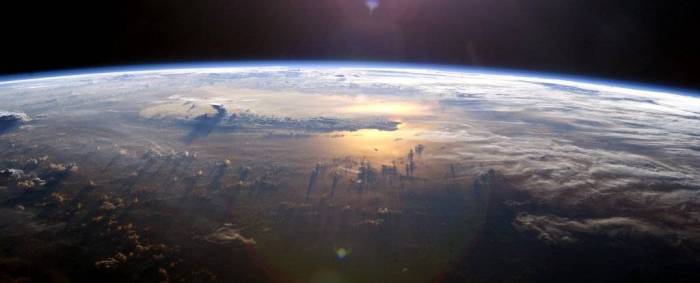But the change did not stop there: when animals did turn up around 520-540 million years ago, new research has found, it changed the atmosphere again - causing a global warming event, although nothing as intense or rapid as the current global warming.
Nevertheless, in the 100 million years after the first animals turned up in the ocean, the new arrivals descended into several mass extinction crises as oxygen levels fell again and carbon dioxide and temperatures came back up, before a decent equilibrium was reached.
"Like worms in a garden, tiny creatures on the seabed disturb, mix and recycle dead organic material - a process known as bioturbation," said climate scientist Tim Lenton of the University of Exeter.
"Because the effect of animals burrowing is so big, you would expect to see big changes in the environment when the whole ocean floor changes from an undisturbed state to a bioturbated state."
The research team, from the Universities of Exeter, Leeds and Antwerp, and the Vrije Universiteit Brussel, used mathematical models to link up the emergence of animals to a global warming event that occurred around 520 million years ago.
Before the sudden emergence of the burrowing seafloor creatures in the Cambrian period 540 million years ago - what is known as the Cambrian explosion- the seafloor had been covered by largely undisturbed microbial mats.
The worm- and bug-like creatures that changed everything didn't leave a lot of fossils of themselves behind, but they did leave widespread fossilised traces of their burrows. And, as they tunneled gleefully among the nutrient-rich microbial mats, they mixed them up with the seafloor sediment like worms in a garden bed - expediting organic processes.
As they fed, they consumed oxygen and produced carbon dioxide - and, although they didn't burrow very deep, just 1-3 centimetres compared to seafloor creatures of today that burrow to 10 times that depth, it was enough to throw everything off balance.
"When we ran our model, we were surprised by what we saw," said environmental scientist Benjamin Mills of the University of Leeds.
"The evolution of these small animals did indeed decrease the oxygen in the ocean and atmosphere, but also increased atmospheric carbon dioxide levels to such an extent that it caused a global warming event. We knew that warming occurred at this point in Earth history, but did not realise it could be driven by animals."
But it all matched up - the arrival of the animals, the bioturbation, the oxygen depletion and the carbon record. And the recurring extinction events from the middle Cambrian period to the early Ordovician have been linked to a depletion of oxygen in the ocean.
This, Lenton said, is not dissimilar to what is happening now. But, unlike the ancient marine worms, we're able to do something about our own situation.
"There is an interesting parallel between the earliest animals changing their world in a way that was bad for them, and what we human animals are doing to the planet now," he said.
"We are creating a hotter world with expanding ocean anoxia (oxygen deficiency) which is bad for us and a lot of other creatures we share the planet with."
The research has been published in the journal Nature Communications.
More about: #Science















































